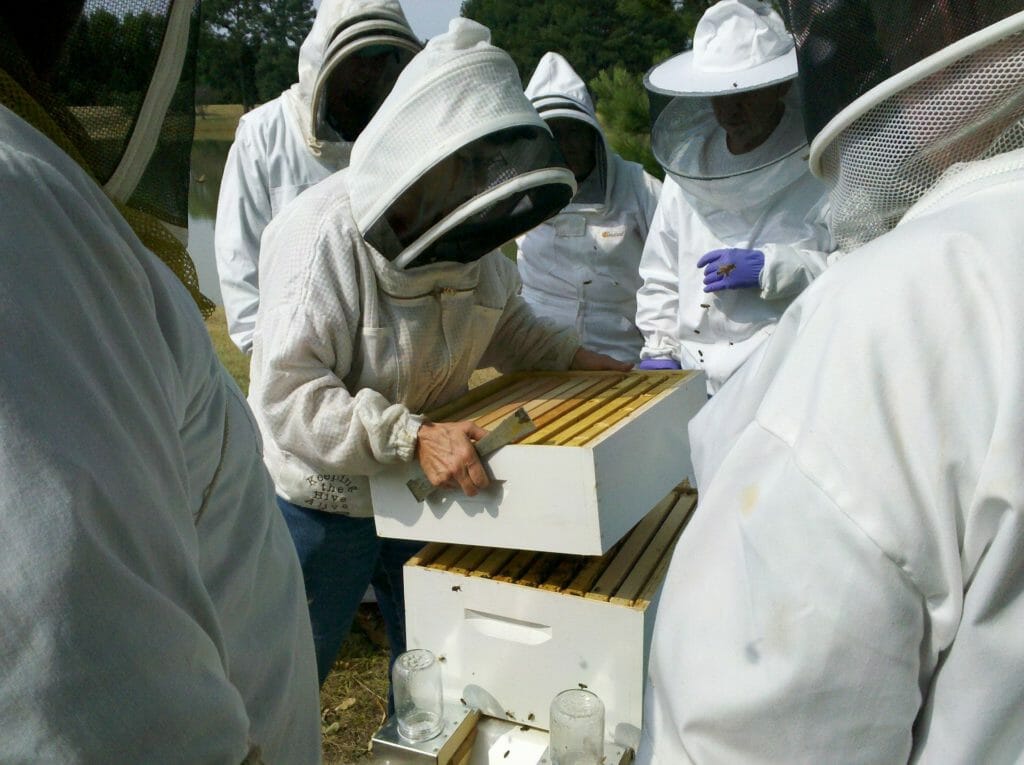Stuart “Stu” Saxby reflects on the lessons he learned as a beginner beekeeper on The Great Australian Bee Challenge.
Recently aired on the ABC, we were thrilled to see The Great Australian Bee Challenge showcase backyard beekeeping on prime time, free-to-air television. The premise was simple. Hosted by River Cottage Australia’s Paul West, four families were challenged to successfully keep a honeybee hive for the first time, and to pull a honey harvest in their first season! The experience brought “these everyday Australians,” and ABC audiences “up close with the latest science about bee brains, communication and behaviour”.
Stuart Saxby and his partner Jade were one of the lucky city-based couples chosen to take part. Now, one month after the series premiered, Stu has written an extensive reflection for the ABC on the “myths, magic and wonder of keeping bees at home”.
While Stu swings between confidently imparting (newly acquired) beekeeping wisdom and giddily gushing over his newfound passion, he has some good practical tips to share for anyone considering backyard beekeeping. Some highlights include:
“Don’t be scared! If you listen to bees’ “body language” there is a low chance of getting stung (top tip: if they are buzzing in your face, just walk away). You’ll develop a sixth sense for how they are feeling based on their buzz and flight patterns. Experienced beekeepers can even smell the pheromones when bees are mad. Of course, a bee suit will protect you in case the bees are in a huff”.
“Myth 1: They’ll attack everyone in sight
Bees don’t like to attack… With a cat or dog, you let them sniff your hand first. With bees, move slowly, don’t walk in their flight path and avoid [wearing] black — it makes you look like a bear!If you’re standing in front of the entrance, you’ll encounter tired bees who’ve been flying up to 5 kilometres to find pollen. They’ll run into you and get annoyed. If they don’t like what you are doing, a guard bee will come and fly back and forth in your face to say “go away”. In this case, just keep walking away until it returns to the hive.
You can happily sit next to the hive and watch your bees flying back and forth, collecting nectar and pollen”.
“Magic 1: Honey!
European honey bees evolved (strangely enough) in Europe, where they often experience snow over winter.As a result they need to store large amounts of honey to keep them fed while flowers are frozen over. As we have a much longer warm period and milder winters, bees in Australia make a large excess of honey. We can take that excess honey (leaving enough for them to keep well fed) and enjoy it ourselves on crumpets or with tea”.
Have a read of the full article here.
Of course, competing in The Great Australian Bee Challenge hasn’t made Stu an overnight expert on backyard beekeeping. Although, he did get the pretty enviable opportunity to be mentored by widely published backyard beekeeping expert Doug Purdie. But as we all know, any beekeeper will benefit from being a learner for life. We wish Stu and Jade
Coming up soon on The Buzz, we’ll be delving into the very different world of commercial beekeeping. Spoiler: Commercial beekeepers may

Visit the Bee2Bee online shop for beekeeping equipment and supplies.




